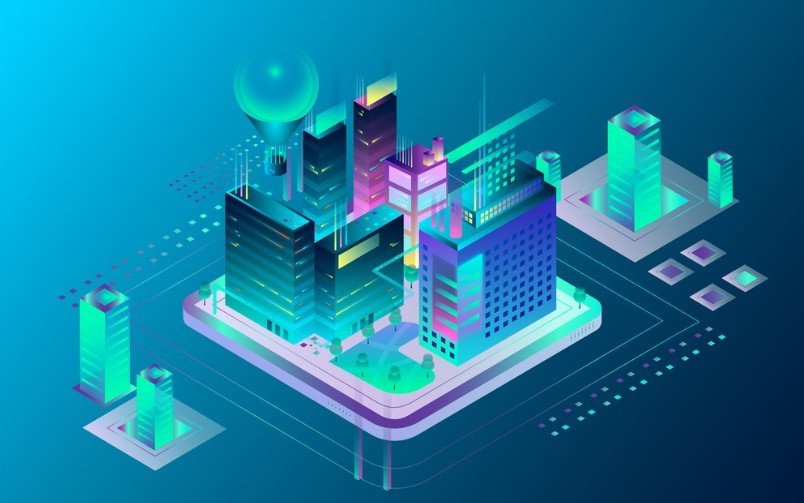Build A Future World Class Workplace With RICOH Spaces
The COVID-19 pandemic has drastically changed the way we work, driving many firms to make the switch to remote work as soon as possible. Management employees were suddenly compelled to learn how to transition from in-person management to managing individuals and teams via a screen. However, as we approach a post-pandemic society, it is evident that hybrid and remote jobs are here to stay. Many businesses continue to embrace hybrid work arrangements, which blend remote and in-person labor. However, many multinational corporations and business executives are beginning to phase out remote work and hybrid work arrangements in an effort to bring their staff back to the office. As a result, many of those employees have started looking for other jobs that have a remote work policy or a hybrid arrangement.
1. Preparing for the next business disruption
a) Disruptions are the side effect. Engagement is the solution.
However, several examples demonstrate that when people organize into high-performing teams after going through the 'formation, storming, and norming' processes that establish understanding of each other's strengths and weaknesses3, nearly any disturbance can be overcome.
The team is resilient when everyone knows each other's strengths and the most effective ways of working together, and when everyone has a common vision of what is expected of them. Capable of skilfully responding to difficulties even when plans become outmoded, and individuals make mistakes.
b) Digital to physical working: you still can’t email a handshake
 Figure 1. You still can’t email a handshake
Figure 1. You still can’t email a handshakeHowever, when 70% of communication is nonverbal, it can be difficult to integrate implicit information. Technologies like videoconferencing can make it even more difficult because everyone puts on a 'business face' and treats each contact as a checkbox on a list rather than an opportunity to create interpersonal trust.
These intangibles are important. Friendships, rather than power battles, characterize high-functioning organizations. Global corporations with people from different nations and no common language can nonetheless share a shared vision: consider Nike or Apple. However, purely virtual organizations never seem to gel, and completely office-bound organizations never seem to adapt.
c) Resilience isn’t just shared understanding – it’s shared experience
That is why a good workplace plan must focus on that sense of community rather than just expenses and resources. Because doing so encourages the ability to adapt and evolve in the face of unforeseen circumstances, rather than merely weathering each storm as it comes.
That is the 'why' of workplace strategy: don't try to predict the next disaster because they are, by definition, unusual and unpredictable. Instead, concentrate on encouraging positive outcomes: preparing your employees to deal with interruption and empowering them to take corrective action. To be tenacious.
2. The engaging workplace model
a) Level 1: The analogue workplace
Most established corporations were here ten years ago, and only a few remain now. This office has a traditional working paradigm in which individuals enter and go at scheduled hours each day and the building is locked.
 Figure 2. The analogue workplace
Figure 2. The analogue workplaceOvernight, leave the room empty. The building's data is limited: judgments are made only when the bills are paid. Inertia is frequently a major factor: many businesses have been doing things the same way for years, with no compelling incentive to change.
Most workers find this entirely acceptable in the absence of a crisis. Everyone has a desk, a conference room is typically available, and HVAC keeps it cool in the summer and toasty in the winter. However, all regulations are ultimately focused on square footage, treating buildings and other resources as cost centers rather than profit centers. There is no IWMS (Integrated Workplace Management System) or CAFM (Computer Aided Facility Management) in place; instead, activities are managed using a spreadsheet.
It is important to note that such businesses are not in the dark. Facilities managers may be experts in budgeting and cost control, while Human Resources may be intimately familiar with how people fit into each area. What they are losing is the opportunity cost: the capacity to collect useful data and use its insights to make forward-thinking actions that seek advantages.
These are laggards, to use the clumsy nomenclature of the Innovation Adoption Lifecycle5. But don't worry if you're one of them. It simply implies you have the biggest and most profitable opportunity available to you.
b) Level 2: Towards proof-of-concept
Level 2 organizations are 'intentionally incompetent'. 6: on the Learning Matrix paradigm, which many HR professionals utilize. These businesses recognize the significance of data and recognize its benefits, but they are still figuring out what data to collect.
They may, for example, keep track of how frequently a conference room is empty. They may even be able to successfully use sensors to provide decision assistance, such as when light switches are turned on or off to indicate that a room is in use. It is also the level at which rudimentary Activity-based Working (ABW) has been implemented as a proof-of-concept in preparation for a prospective deployment. The realization has begun to sink in that in order to effectively serve employees, one must first look at what they do.
Deeper datasets that offer context, such as how many conferences are held on Zoom instead, may elude them. The true level of everyday demand is not evident. They may utilize IWMS and CAFM applications to measure what they have, but without enough data, they will not be able to realize their full potential.
Level 2 is thus the proof-of-concept level, when early explorations point to large rewards later. However, after a pandemic, Level 2 is a good place to be because you're starting to let your people's needs determine your regulations rather than letting your structures to corral and regulate what people can do.
c) Level 3: Connected but not yet integrated
Level 3 organizations have improved, yet they are still lagging behind many competitors. They may employ a variety of sensors to aid decision-making - light, heat, remote logins, occupancy levels - and even use this information in real time, dialing resources up and down to give services to their people at the most cost-effective price.
The major element keeping them from progressing is data connectivity. The daily cube farm occupancy dataset is not compared to the dataset for individuals working from home; the Big Picture remains hidden. As a result, when a disruptive event occurs, they are unsure of its consequences and how their staff will react, which affects their response time - and the effectiveness of that response.
d) Level 4: Out of the box, out of the building
Tech and finance are two industries that are frequently found at Level 4. Apple's workplaces were obsessed with by the late Steve Jobs, who saw'serendipitous meetings' as essential for creativity, while MIT's 'Infinite Corridor' is notorious for forcing individuals from disparate departments into everyday touch. Google's east coast headquarters in New York dedicates entire floors to employee play, complete with a candy store with hobbyist computer components for the taking (many engineers have part-time Raspberry Pi and Arduino projects) and even a LEGO room where developers may recharge their creativity. And Google did it in an Art Deco edifice constructed for the public sector in the 1930s.
In the United Kingdom, asset management Fidelity homes hundreds in a little village far from Canary Wharf and the City of London's financial area, styled after a university campus to foster collaboration. In America, hedge funds have traditionally congregated in Connecticut, where people can make sound decisions away from the hustle and bustle of Manhattan. (Ray Dalio of Bridgewater Associates attributes much of his firm's success to the open barn style of his office.)
e) Level 5: Unified integration of building technologies
The Innovators are on the cutting edge of the adoption curve. Employee strategy is woven into the fabric of building management here, where the spaces serve the people and are easily adaptable to their demands.
 Figure 3. Building technologies
Figure 3. Building technologiesWith omni-channel sensors in every wall, door, and system, massive amounts of data are generated every minute – and Level 5 organizations have the means to make use of it. Machine learning algorithms will increasingly be used to extract patterns in data and transform them into actionable recommendations.
Perhaps commuters arrive at 8 a.m. but do not access the lobby for thirty minutes: does this indicate a parking lot bottleneck? Is one meeting room always full in the morning but empty in the afternoons: might the angle of the light be making it uncomfortable?
You'll achieve more than resilience in times of company disruption if you discover what matters and what doesn't. You'll be instilling resilience in your company's culture, making it ready for not just the next disruption, but all the ones after that.
3. Build a future world class workplace with Ricoh Spaces
RICOH Spaces enables you to adapt to changes in how people work to provide a consistent employee experience now and in the future.
It unifies activities such as desk booking, meeting room management, wayfinding, and more, bringing workplace management under one roof while keeping the best of the physical office experience and effortlessly merging it with the best of remote working.
Your hybrikworkplace platform, it unlocks the insights and capabilities required to alter inefficient methods of working, enhance collaboration, and cut costs—preparing your firm for how it will work in the future.
Ricoh Spaces – Hybrid Workplace Solution For Your Business/Organization
RICOH Spaces allows organisations to manage all buildings in their portfolio in one place.
Local user admin roles can be applied per location allowing for fine-tuned access control and large-scale management.
Polices can be applied per location allowing for a flexible implementation.
Respond to the needs of your business by scaling your solutions as your business grows, taking on a cost-effective and flexible journey.

Manage your organisation at scale
a) Scalable on-demand
- Expand space with our Workplace Service Team
- Get a brand-new office re-fit
- Procure new hardware
- Invest in best possible loT sensors and AV equipment
- Floor plans can be adjusted to workplace size
- No limit on number of employees
- Growing scalability
- Workplace management from remote
b) Platform to the future workplace
A workplace experience platform designed by RICOH from the ground up.

- Desk booking
- Room booking
- Visitor Management
- Digital Signage
- Powerful analytics & insights
- Real-time interactive floor plans
- Organisation management
- Wayfinding
- Custom integrations
- 17 Languages
- IoT & Analytics
- Mobile & Desktop Apps
- Room panels
- Employee & Group management
Related articles
News & Events
Keep up to date
- 18Dec
Ricoh recognised as a Top 5 global AV Integrator in SCN Top 50 Systems Integrators 2025
- 11Dec
Ricoh Recognised as a Sustainability Leader in Quocirca's 2025 Report
- 07Nov
Ricoh Pro C7500 Gold Toner Brings Sustainable Luxury to Sun PhuQuoc Airways’ Travel Guide
- 31Oct
Ricoh perovskite solar cells installed on Japan Aerospace Exploration Agency cargo transfer spacecraft1 HTV-X1
